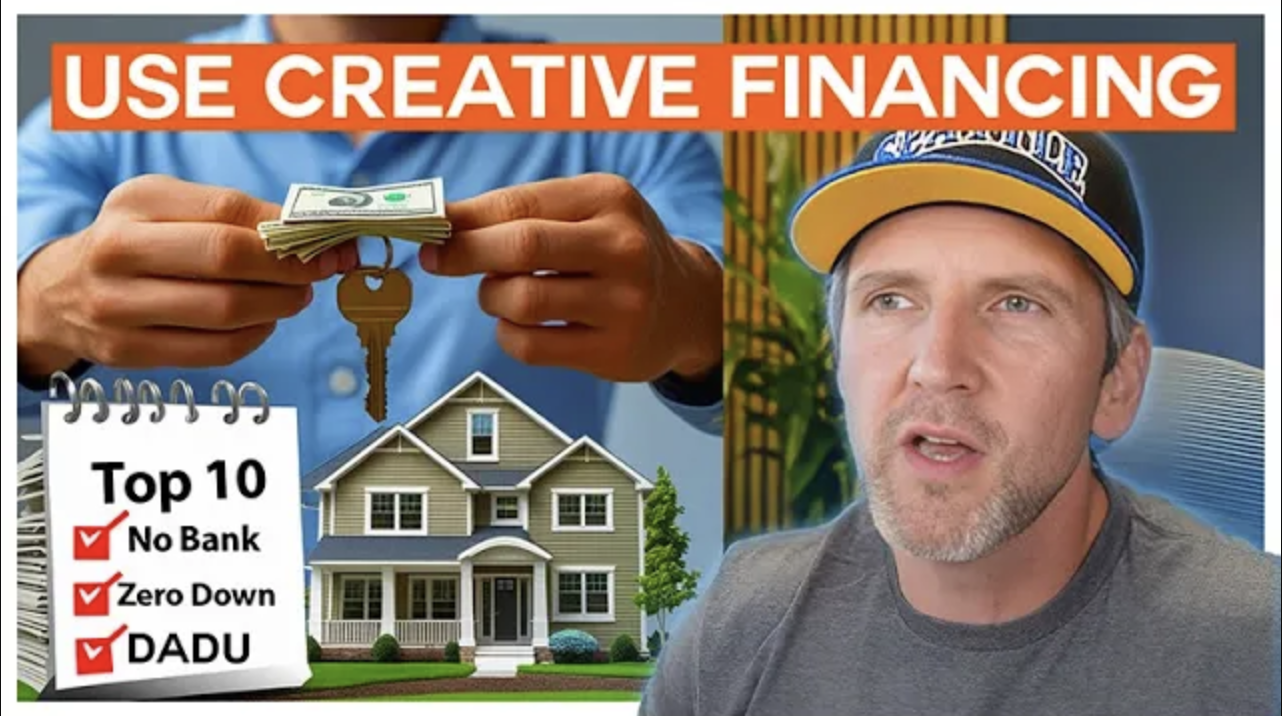Categories
DADU, creative financing, Home Prices, Homebuyer Tips, Real Estate Fees, Wealth Building, Wealth Building through Real EstatePublished August 14, 2025
Top 10 Things To Use Creative Financing For in Real Estate in 2025

10 Creative Financing Strategies Every Real Estate Investor Should Know
If you're looking to build or scale your real estate portfolio without relying on traditional bank loans, creative financing is your best tool. These strategies are used by top-tier investors to close deals with little to no cash, no W2 income, and no credit requirements.
1. Buy Distressed Properties with Minimal Cash
Distressed properties like estate sales, pre-foreclosures, or homes with major maintenance issues are ideal for flips, BRRRRs, and long-term holds. Use subject-to deals, seller carrybacks, hard money, or mix-and-match structures to acquire these at a discount without much upfront cash.
2. Acquire Rentals Without Bank Loans
Lease options, seller financing, and subject-to deals help you lock in low monthly payments and long-term terms. This is especially powerful in high interest environments, allowing you to control both cash flow and appreciation without a traditional mortgage.
3. Control Properties Without Owning Them
With master leases and lease options, you can control a property, collect rent, and profit from appreciation — all without owning it. You sandwich the deal by locking in a price and re-renting or reselling at a higher one. It’s high return with low risk.
4. Scale Into Multi-Units and Commercial
Creative structures like syndications, seller seconds, and equity partnerships help you overcome residential lending caps. You can raise capital faster and own more units without waiting to save for each individual deal.
5. Develop Land with Low Upfront Investment
Use earnest money, land contracts, or seller financing to control raw land. Then, increase its value by running entitlements. You can either raise funds to build or sell at a premium once the value is unlocked. Control first — ownership later.
6. Flip Using Other People’s Money
Work with private lenders, use hard money, or tap into retirement accounts like 401(k)s. Build relationships and a track record so your network funds your deals. This lets you turn one flip’s budget into two or three active projects at the same time.
7. Buy Homes in Pre-Foreclosure
Pre-foreclosure sellers are often highly motivated. Subject-to financing, short sales, wraps, and owner financing work well here. Look for properties with existing low rates and use a bit of cash to bring the loan current, then create your equity spread.
8. Partner With No Money Down
Be the deal finder, get the property under contract, and then bring in partners with capital. You get a slice of the deal by putting in sweat equity. Beginners may start small, but with time and a track record, your share grows significantly.
9. Create Affordable Housing
Think ADUs, DADUs, house hacking, and small multi-family owner-occupied strategies. Use HELOCs, seller financing, private loans, or local programs. These units rent fast, sell fast, and fill a real need — especially in tight markets like Washington State.
10. Convert Non-Traditional Properties
Churches, warehouses, office buildings, and motels can be transformed into residential or mixed-use properties. These deals often require bridge loans, seller financing, or private money. Focus on meeting demand in under-served niches for huge upside.
Creative financing is not just for beginners — it’s how serious investors play the game at scale. Master these 10 methods and you’ll find yourself closing more deals, with less cash, and far fewer barriers.
.png)




